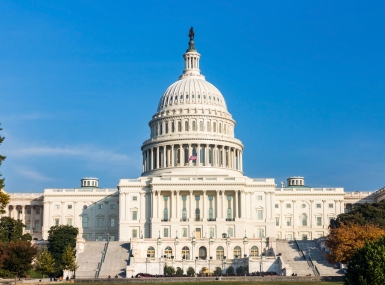Supreme Court decision muddies WOTUS challenges
Upcoming Events
Related News

The Supreme Court ruled that federal district courts have jurisdiction over WOTUS, potentially invalidating a nationwide stay issued in Oct. 2015
A unanimous ruling by the U.S. Supreme Court has left in question the status of a nationwide halt to the implementation of an Obama-era rule defining the “Waters of the U.S.,” (WOTUS). On Jan. 22, the nine justices ruled unanimously that federal district courts have jurisdiction over challenges to the rule, rather than the appeals courts. The decision potentially invalidates a nationwide stay issued by the 6th U.S. Circuit Court of Appeals in October 2015.
WOTUS is a term used in the Clean Water Act to determine what waters and their conveyances fall under federal — versus state — permitting authority. In 2014, the EPA and the Army Corps of Engineers undertook an effort to rewrite and expand the current WOTUS definition. The rule was finalized in 2015.
Almost immediately after the rule was finalized, lawsuits were filed in both appeals and district courts arguing that EPA and the Corps had overreached in their authority to regulate certain bodies of water. However, there was significant debate over which court — district or appeals — had the authority to hear the case, setting the stage for the recent high court decision.
Once the 6th Circuit Court of Appeals put a nationwide stay on the rule, it could not be implemented nationally until the stay is lifted. However, now that the Supreme Court has decided that cases belong in federal district courts, there is some confusion about how this decision will affect the nationwide stay.
Initially, it is expected that the 6th Circuit will lift the nationwide stay within the next several weeks, at which point the 2015 rule would go into effect in 37 states, which will almost certainly result in additional lawsuits in the district courts. Thirteen states (Alaska, Arizona, Arkansas, Colorado, Idaho, Missouri, Montana, Nebraska, Nevada, South Dakota, Wyoming, and New Mexico) would be unaffected by this action. In an August 2015 decision, a federal district court in North Dakota put a stay on the rule for the states within its district.
Meanwhile, the Trump Administration, anticipating a decision by the Supreme Court, released a proposed rule late last year to delay implementation of the 2015 rule for two years. EPA estimates this rule will be finalized this month. Concurrently, the administration is working on an effort to withdraw the 2015 rule and recodify pre-existing regulations, while they work on a new WOTUS rewrite.
Since the 2015 WOTUS rule was originally proposed, NACo has expressed concerns with the impact a broader interpretation of WOTUS may have on county-owned and maintained roads, roadside ditches, bridges, flood control channels, drainage conveyances and wastewater and storm water systems. NACo has been heavily engaged with the EPA, participating in Executive Order 13132 Federalism briefings to discuss concerns with the 2015 WOTUS rule and next steps to replace it.
Attachments
Related News

U.S. House of Representatives passes SPEED Act and other permitting reform bills
On December 18, the U.S. House of Representatives passed the SPEED Act (H.R. 4776). The SPEED Act would strengthen county involvement in decision-making and make needed commonsense reforms to the federal environmental review process.

House Natural Resources Committee advances the Endangered Species Act Amendments Act of 2025
On December 17, the House Natural Resources Committee advanced the Endangered Species Act (ESA) Amendments Act of 2025 (H.R. 1897). The version passed by the committee adopted several changes from the initial bill and would address key county concerns by improving the implementation of the ESA. The legislation now awaits a floor vote before the whole U.S. House of Representatives.

Senators introduce bipartisan UPGRADE Act to support small and rural public water systems
On December 15, Sens. Lisa Blunt Rochester (D-Del.) and Roger Wicker (R-Miss.) introduced the Unincorporated Partnerships for Grant Resources, Assistance, and Drinking Water Enhancements (UPGRADE) Act (S. 3465), a bipartisan bill that would strengthen federal support for small public water systems and helps unincorporated communities access clean and affordable water.